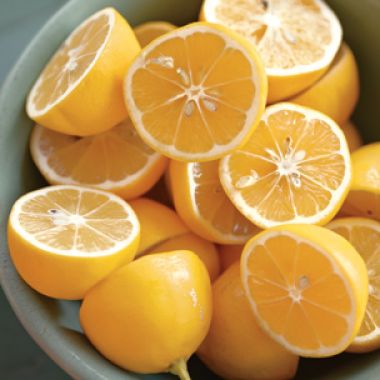All About Lemons

Lemons have long played an important role in kitchens around the world, with their tart juice and aromatic, oil-rich zest contributing flavor to countless dishes. Lisbon and Eureka are the most popular varieties because of their large fruit, distinct sourness and thick, protective piths.
The smaller, rounder, more fragile Meyer lemon boasts a floral fragrance and sweeter flavor. A hybrid imported from China, it now proliferates in California and other Mediterranean climates. This prized fruit is thought to be a cross between a Eureka lemon and a mandarin orange.
Lemons reach their peak in the winter and early spring in the mild climates where they are grown. Use their juice and zest to brighten soups, finish sauces, marinate meats, garnish vegetables and enhance drinks, as well as to flavor baked goods.
Selecting
Choose lemons that feel heavy for their size and are free from soft spots. Lemons with smooth, glossy rinds offer the most juice, while fruits with thick skin will more easily yield generous amounts of zest.
Storing
Store lemons in a basket at room temperature for up to 1 week, or refrigerate them in a plastic bag for up to 1 month. Lemon juice can be frozen for up to 6 months.
Preparing
For the most juice, bring the lemon to room temperature and roll it firmly against a hard surface. Then use a citrus reamer to extract the juice. A rasp grater is best for obtaining fine, aromatic shreds of lemon rind free of any pith. A vegetable peeler is useful for creating wide ribbons of lemon zest. Use a sharp knife to cut the fruit into slices or wedges.
Adapted from Williams-Sonoma Cooking from the Farmers’ Market, by Tasha DeSerio & Jodi Liano (Weldon Owen, 2010).